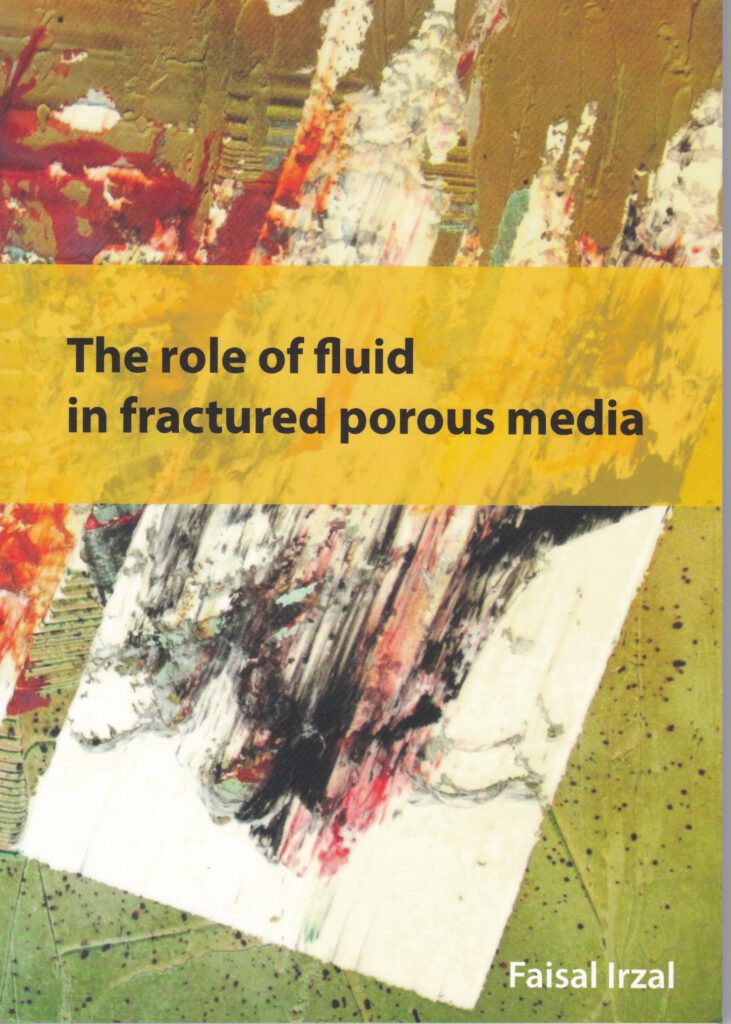POROMult
Multiscale computational poromechanics
Overview
Modeling Crack Formation in Porous Materials: From Discs to Diapers
This research project, led by PhD student Faisal Irzal, focused on understanding how cracks form in porous materials filled with fluid—such as intervertebral discs or shale rock. These materials exhibit complex behavior due to the interaction between the solid matrix and fluid content. In biological systems like the spine, water loss in cartilage with age can lead to painful hernias. In industrial applications such as hydraulic fracturing, similar principles are used to break rocks and release energy. However, the underlying physics of crack formation in such mixtures remains poorly understood.
The core scientific challenge was to develop a multiscale numerical model capable of capturing crack initiation and growth in porous media. One key finding was that, unlike in solids, cracks in these materials can be stabilized by the fluid filling the crack itself. Modeling this behavior accurately required incorporating all physical terms at the microscale. Faisal Irzal was the first to achieve this in two dimensions for large deformations, which led to a significant publication (Irzal et al., 2013).
The team then advanced their methods by adopting isogeometric analysis—an emerging numerical technique that enables better handling of higher-order derivatives than traditional finite element methods. This shift was made in collaboration with industrial partners and researchers familiar with the method, including contacts at Abaqus and the group of Tom Hughes in Texas.
Another important discovery came from PhD researcher Francesco Pizzocolo, who observed that crack propagation in porous materials can occur in a stepwise, intermittent manner. This behavior, confirmed experimentally in hydrogels, contrasts sharply with the smoother cracking seen in metals. Although the exact material parameters driving this effect are still unknown, the findings may have implications for understanding phenomena like earthquakes and aftershocks.
The project was supported by a diverse user committee, including Shell, Petrobras, Dassault Systèmes, Habanera, and Procter & Gamble. Regular meetings with these partners helped ensure practical relevance and encouraged reflection from both academic and industrial perspectives.
The success of the project has led to several follow-up initiatives. A new hydraulic fracturing simulation project is being developed under the Top Sector Energy programme, extending the model into 3D. In parallel, a new collaboration with Procter & Gamble explores crack formation in superabsorbent gels used in diapers—specifically how swelling in the top layer of gel grains can block further absorption.
By bridging biomechanics, civil engineering, and industrial applications, the project exemplifies how fundamental modeling can lead to unexpected insights and real-world impact across multiple fields.
(Irzal et al., 2013) (Irzal et al., 2014) (Irzal et al., 2013) (Irzal, 2013)
Project details
| Project | MuST: Multiscale computational poromechanics |
| Funding | NWO |
| Years | 2010-2014 |
| PhD-candidate | Faisal Irzal |
| Supervisors | Jacques Huyghe, Joris Remmers, Rene de Borst |
| Collaborators | P&G |
More information
https://www.nwo.nl/sites/nwo/files/documents/Eindrapportage_MuST.pdf
References
2014
- An isogeometric analysis Bézier interface element for mechanical and poromechanical fracture problemsInternational Journal for Numerical Methods in Engineering, May 2014
2013
- A large deformation formulation for fluid flow in a progressively fracturing porous materialComputer Methods in Applied Mechanics and Engineering, May 2013
- Isogeometric finite element analysis of poroelasticityInternational Journal for Numerical and Analytical Methods in Geomechanics, May 2013
-
 The role of fluid in fractured porous mediaEindhoven University of Technology, May 2013René de Borst, Joris J.C. Remmers, Jacques M. Huyghe
The role of fluid in fractured porous mediaEindhoven University of Technology, May 2013René de Borst, Joris J.C. Remmers, Jacques M. Huyghe